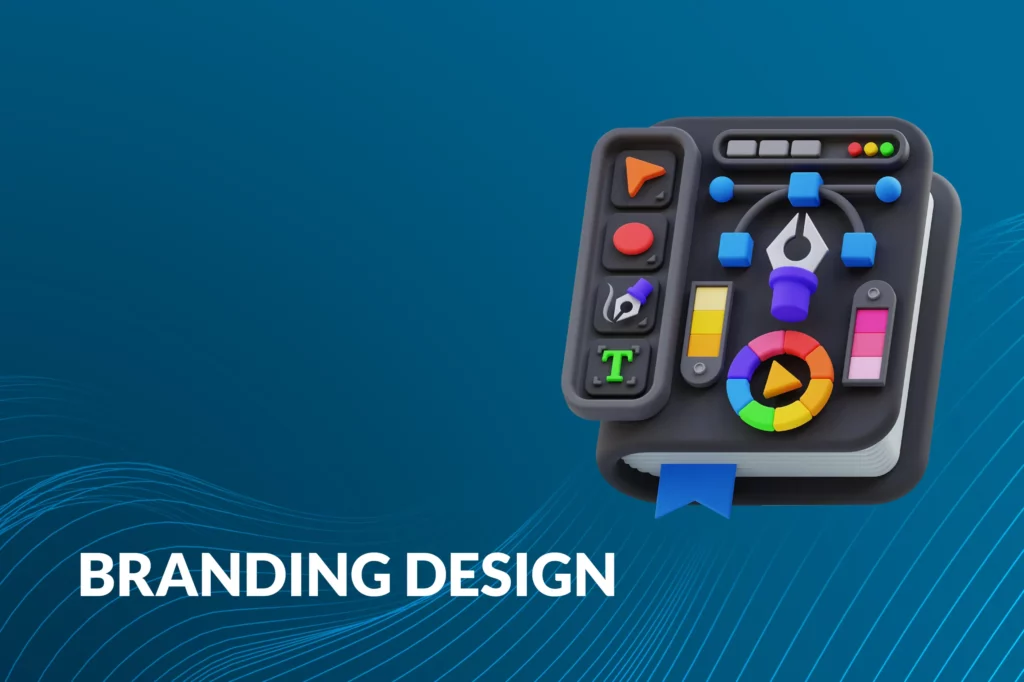In today’s world, branding design is more than a simple business need; This process means creating an identity that not only introduces products and services, but also establishes an emotional and lasting relationship with customers. Effective branding can have a significant impact on the success of a business and serve as a tool for differentiation in a competitive market. In this article, we will examine the stages and principles of branding design, its importance and existing challenges.
The concept of branding
Branding is the process of creating a name, trademark, design and public image for a product or service. This identity includes not only the visual design, but also the messages, values and experience that the brand offers to customers. Branding allows you to place yourself in the minds of customers and be known as an authentic and reliable choice.
The importance of branding design
Differentiation in the market: In crowded and competitive markets, branding helps businesses stand out from the competition. A strong and recognized brand can attract customers’ attention and encourage them to buy.
Building trust and loyalty: Brands with a strong identity usually attract more trust from customers. This trust leads to customer loyalty and they tend to buy from that brand again and again.
Increasing perceived value: Branding can help increase the perceived value of a product or service. Customers are usually willing to pay more for reputable brands because they trust their quality and service.
Facilitate the marketing process: Strong branding can help facilitate the marketing process. Marketing messages associated with a strong brand are easy to recognize and remember, which can have a huge impact on customers’ purchasing decisions.
Branding design steps
Market research and analysis: The first step in branding design is to research the market, competitors and target customers. This analysis will help you identify your brand’s strengths and weaknesses and clearly understand what your customers need.
Defining the brand identity: In this step, you should define the mission, vision and core values of the brand. These identity elements help you define the message and experience you want to convey to customers.
Design of visual elements: logo design, choice of colors, type of font and other visual elements are part of the branding design process. These elements must be consistent with the brand identity and its messages and convey the feelings and values of the brand.
Developing Communication Strategy: To communicate effectively with customers, you need to develop specific communication strategies. This includes choosing communication channels, creating content and how to interact with customers. For example, using social networks to communicate more closely with customers can be very effective.
Implementation and monitoring: After designing the brand, the implementation phase begins. At this stage, you should introduce your brand in the market and monitor its performance. Reviewing feedback and evaluating brand success will help you make the necessary improvements.
Challenges and solutions
Branding design may face challenges. One of the challenges is fierce competition in the market. To meet this challenge, you must focus on creating differentiation and providing added value. For example, you can focus on quality, innovation or customer service to attract customers to your brand.
Another challenge is changing customers’ tastes and needs. Brands must be up-to-date and able to adapt to changes. Conducting regular research and checking customer reviews can help you in this regard.
Tools and techniques for branding design
Surveys and market research: Using surveys and market research can help you better understand your customers’ needs and preferences. This information allows you to design your brand more effectively.
Creativity workshops: Holding creativity workshops with team members and stakeholders can lead to new and innovative ideas for branding. These workshops provide an environment where people can share their ideas and exchange ideas.
Use design software: Graphic design tools such as Adobe Illustrator and Canva can help you create visual elements of your brand. These softwares allow you to professionally design your logo, colors, and other visual elements.
conclusion
Branding is a complex but necessary process that is critical to success in today’s market. By creating a strong and up-to-date brand identity, you can achieve market differentiation, gain customer trust and increase sales. Finally, branding is an ongoing journey and you must always be up-to-date and adapt to market changes.
Investing in branding design will not only help your business succeed, but it can also create a brighter and more sustainable future for you. By focusing on your customers’ values and needs, you can position your brand as an authentic and trusted choice in their minds.



